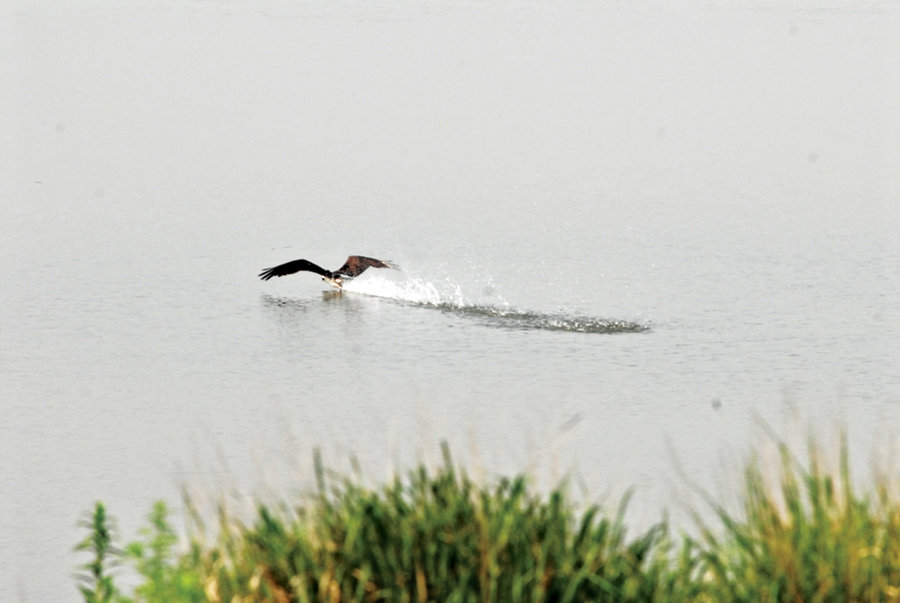Environmentalism and woodworking are not usually associated, but at Bayonne High School the carpentry program is teaching students technical skills while lending a hand to environmental conservation in Hudson County. Students recently constructed an osprey platform to be installed in the Meadowlands by the Hackensack Riverkeeper, an environmental organization that advocates for restoration and conservation of wildlife habitats on the Hackensack River watershed.
The birds and the beehives
“The environmental projects put them in touch with nature in a very real way and allow students to make meaningful, positive and long-lasting changes in the world around them.,” said carpentry instructor Greg Cea while flipping through photos of a beehive the class made for a beekeepers’ association and a planter box for the Midtown Community School.
The students who made the donations were happy to do the work. ¬Victor Dejesus, who helped build the platform and beehives, said he wants to go into construction. Brandon Giraldo said he’s committed to the Universal Technical Institute (UTI) to study to be an automotive technician. “We went on a lot trips to UTI and carpentry unions, stuff like that. It’s a really good job.”
The carpentry shop is large enough to build a boat or a house inside its walls. In fact, they’ve done both. They built a Viking ship for launch in Newark Bay, but instead marched it in the 2014 Memorial Day Parade. They built small one-bedroom houses and use them now to demonstrate electric wiring. Cea sees practicality and utility in learning to work with your hands. “You’re likely to own a home,” he said. “At least know what you’re doing and understand the concepts.”
The school’s vocational program expanded in recent years. “Our students work on challenging hands-on projects to prepare them for careers,” Cea said. “However, once their work is complete, the projects are often dismantled.” He said that learning often involves putting things together and taking them a part, but seeing the platforms’ use in the real world reinforces carpentry’s utility. “What we’re doing is giving the kids an opportunity,” he said. “You don’t want to tell them here, build this shelf, and that’s it. We want to give them a skill, a career, a background.”
Goodbye pesticide, hello ospreys
Ospreys use the platforms as nests when they return after their winter migration south. A male and female migrate to different places in the winter but return to the same New Jersey nest in the summer. They’re thriving in the Meadowlands today, thanks to the likes of the carpentry class and the Hackensack Riverkeeper, but ospreys were once victims of the infamous insecticide, DDT.
DDT used in the Meadowlands contaminated fish, which in turn made osprey eggshells so thin that parents would break the eggs in an attempt to incubate them. New Jersey banned the pesticide in 1968, but ospreys continued to decline until they became the first bird to be put on the endangered species list in 1974. Around that time is when conservationists began installing artificial osprey nests to encourage ospreys to come back.
“What we’re doing is giving the kids an opportunity. You don’t want to tell them here, build this shelf and that’s it. We want to give them a skill, a career, a background.” – Greg Cea
____________
A habitat under control
Bill Sheehan, Hackensack Riverkeeper captain, said, “As recently as the early 1970s, the inventory for the entire state were two nesting pairs in the Delaware River area. Now we have hundreds of nesting pairs.” He explains why platforms are so helpful. “They like to nest in dead trees. But in the Meadowlands and in the Hudson County area, there’s not a lot of natural nesting habitat around. So by building the platforms you’re enhancing the nesting options for the birds.”
Sheehan says that platforms are installed between the northern bay and Hackensack River, and all the way down to Elizabeth and Linden. They install the platforms only on public land where the properties can be controlled and monitored.
He cites the “lucky charm” platform on the Hudson generating station that houses a pair of ospreys who moved into nest in 2001. “Since, they’ve raised two to three young ospreys with each season,” Sheehan says. “Right now, because of that one successful pair, we now have roughly nine or ten known osprey nests spread out from the lower part of the river by Kearny all the way up into Lyndhurst and over into Carlstadt and as far up as Teaneck.”
Their ecosystem has returned. “Thirty years ago, there were no fish at all in the Hackensack River except for some eels,” Sheehan said. “Now there’s over 65 species of marine life in it.” The osprey platforms are a success story for both the ospreys and Bayonne High School’s carpentry shop. “We occasionally see osprey flying over the Bay,” Cea said, “and to know that our students are creating habitat for these birds is exciting for all of us.”
Rory Pasquariello may be reached at roryp@hudsonreporter.com.
